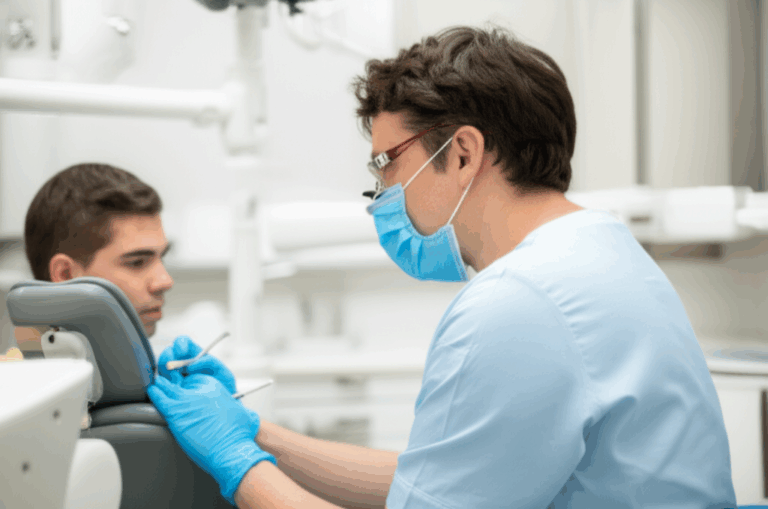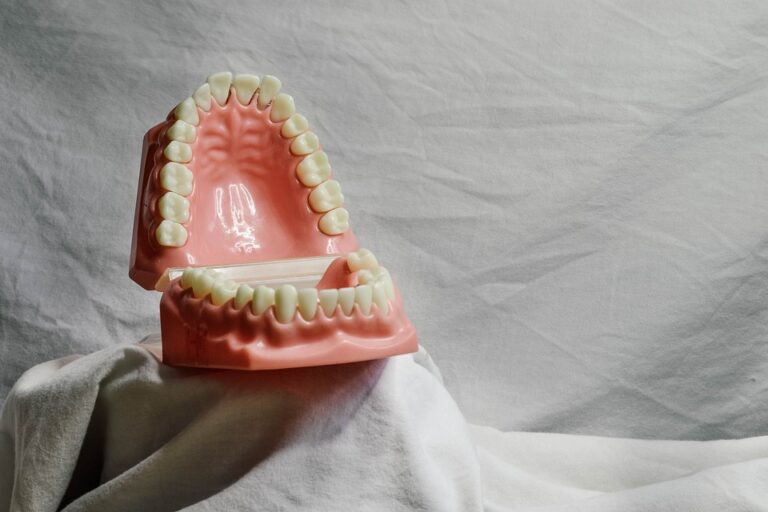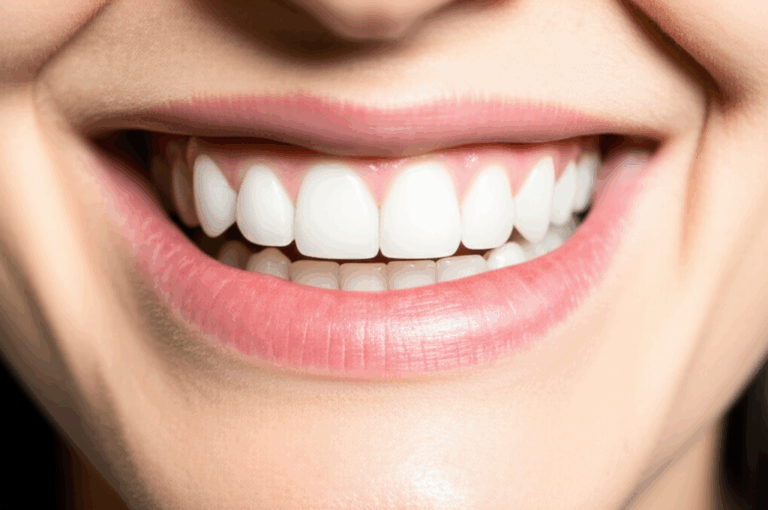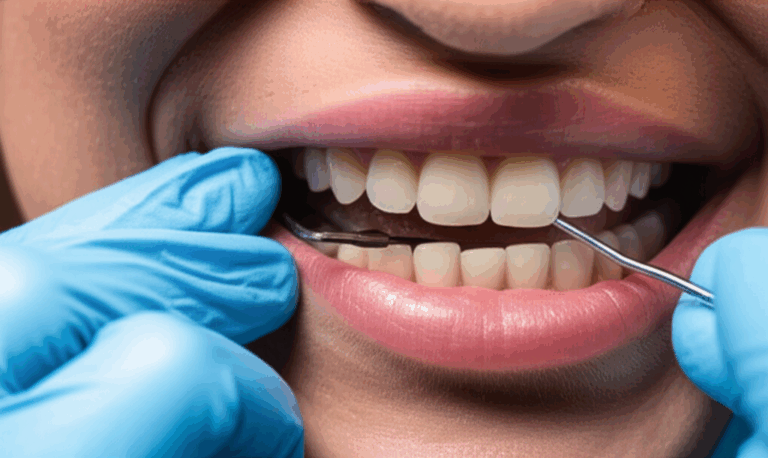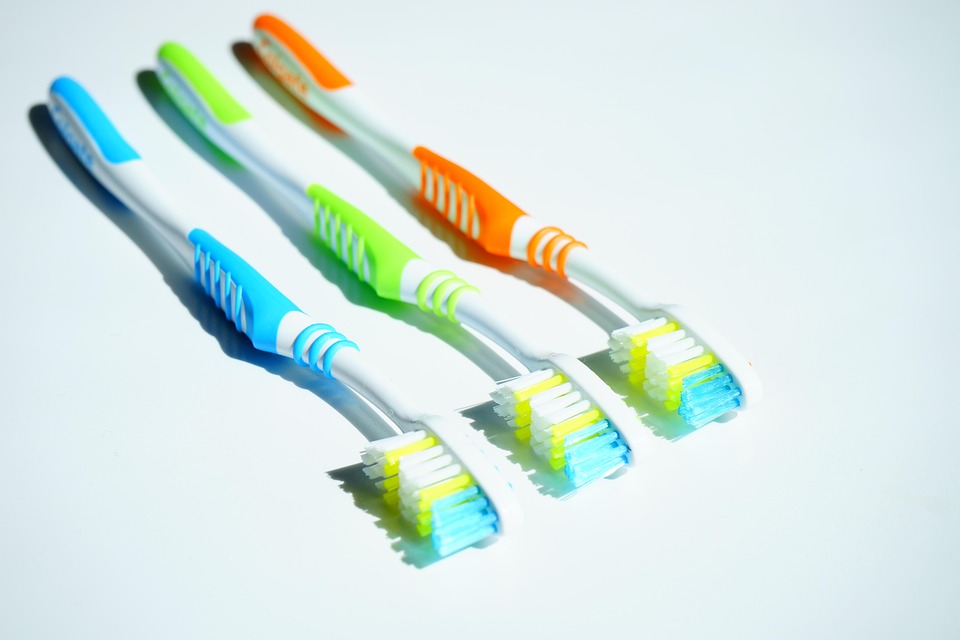
Can Dental Problems Cause Headaches?
I used to think headaches was just a part of life. You know how it is: a long day at work, too much screen time, or a bit of stress, and soon that old dull ache would start to creep in around my head. I had a whole bunch of things I tried—painkillers, cold cloths, stretching, drinking more water. Sometimes they worked, sometimes they didn’t. But for years, I fought these headaches that kept comin back without ever thinking the real reason was hiding right under my nose—or more accuratly, inside my mouth.
If your here, you’re probably in the same boat. You’re tired of the annoying pain and looking for answers besides the normal stuff. In this article, I’m going to share my own story of finding out what was wrong. I’ll tell you how I finally connected my headaches that never went away to my teeth, the exact problems that was causing them, and the steps I took to get relief that lasts. This isn’t just a list of facts, its the roadmap I wish I’d had when I was stuck in that circle of pain.
Article Outline Overview
- My Bad Circle of Headaches: The Mystery I Couldn’t Figure Out
- The “Aha!” Moment: Connecting Things to My Teeth
- The Jaw Clenching Problem: How TMJ and Bruxism Make a Mess
- When Hidden Problems Happen: Abscesses, Infections, and Cavities
- A Bad Bite: How Your Teeth Not Lining Up Affects Your Head
- My Plan to Get Better: The Steps I Took to Stop My Dental Headaches
- When to See a Doctor or Dentist: Don’t Ignore These Warning Signs
- My Final Thoughts: A Life Without Headaches All the Time
My Bad Circle of Headaches: The Mystery I Couldn’t Figure Out
For the longest time, my headaches had a pattern that was super predictable but I couldn’t explain it. I’d often wake up with a dull, pounding feeling in my temples and a weird stiffness in my jaw. I just thought it was from sleeping in a weird position. Other times, a headache would build up slow through the day, starting as a little pressure behind my eyes and getting worse until it was a big tension headache that made it hard to think.
I tried everything. I seen my regular doctor, who said it was probably stress or not drinking enough water. So, I drank a gallon of water a day and started doing mindfulness stuff. It helped a little with my stress, but the headaches stayed. I got my eyes checked, thinking it was eye strain from my computer. My glasses were fine.
The pain was incredible disruptive. It wasn’t just the ache, it was the feeling of being tired and grumpy that came with it. I found myself getting mad at my family easy and having a hard time focusing on work. Some headaches was so bad they felt like migraines, with being sensitive to light and a feeling of pressure deep inside my ear. It felt like a little storm was always about to start inside my head, and I had no idea what was causing the bad weather. The cycle of taking painkillers just to get through the day felt like something I couldn’t keep doing and, honestly, a bit scary. I felt like I was just covering up a symptom, not fixing the real problem.
The “Aha!” Moment: Connecting Things to My Teeth
My big discovery didn’t come from a brain doctor or a specialist. It came, out of nowhere, during a normal dental cleaning. As my dentist was finishing up, he ask, “Do you get headaches or a sore jaw alot?”
I was surprised. “Yeah, actually, I do,” I said. “How did you know?”
He pointed to my back teeth. “You have wear here that show you’re clenching or grinding your teeth, probably at night. That puts a whole lot of stress on your jaw muscles, and those muscles are all connected up to your temples and head.”
It was like a lightbulb went off. All of a sudden, all the different symptoms started to make sense. The morning headaches, the jaw soreness, the pain near my ear—it all pointed back to my mouth.
This is a perfect example of what I later learned is called referred pain. Think of it like bad wiring in your house, a problem in one room can make a light flicker in a whole different room. In the same way, the nerves in your teeth, jaw, and face muscles is all tied together. When one spot is sore, infected, or under stress, it can send pain signals down these shared nerve roads, and your brain thinks that pain is coming from somewhere else—like your head. My dentist explained that my body was basically sending warning signs from my jaw, but my brain was getting them as headaches. Finding this out was the first step to finally understanding and fixing the problem.
The Jaw Clenching Problem: How TMJ and Bruxism Make a Mess
Once my dentist opened my eyes that it could be my teeth, I looked into the two biggest bad guys he mentioned: TMJ disorder and bruxism. I quickly saw I was a perfect example for both.
What I Learned About Temporomandibular Joint (TMJ) Disorder
The temporomandibular joints, or TMJ, are the two hinges that connect your jawbone to your head, one on each side. They are joints that do a lot, letting you to talk, chew, and yawn. Temporomandibular Disorder (TMD) happens when these joints and the muscles that control them aren’t working right.
For me, the signs was small at first. I’d sometimes hear a little clicking or popping sound when I opened my mouth wide to eat a burger or yawn. I never thought much of it. But like my dentist said, that clicking was a sign the joint wasn’t moving smooth.
The real problem is the tight muscles. When the TMJ is bothered, the muscles around it—the ones for chewing that run along your jaw and up the sides of your head to your temples—work too hard. They get tight and tired out. This feeling of always being tight is a direct cause for tension headaches. Think about flexing your bicep for hours, your whole arm would end up aching. The same thing was happening in my face and head. The pain wasn’t just in my jaw, it was spreading up, causing those headaches at my temples that wouldn’t go away and sometimes even feeling like a sinus ache.
My Habit I Didn’t Know About: The Nightly Grind of Bruxism
Even more important for me was finding out about bruxism. This is the medical word for when you clench or grind your teeth without knowing. Some people do it during the day because of stress or when they’re focused, but most people, like me, do it at night while sleeping. You have no idea you’re even doing it until you start seeing the damage.
The forces you put on your teeth when grinding at night is super powerful—way stronger than the pressure of normal chewing. This huge, long-lasting pressure does two terrible things:
- It grinds down your teeth: This was the wear and tear my dentist saw. Over time, grinding can make your teeth flat, chip them, or even crack them.
- It makes your jaw muscles really tired: This was the reason for my morning headaches. I was basically making my jaw muscles do a hard, eight-hour workout every single night. I was waking up with a sore, tired jaw and a headache that was already started because my muscles had been tight and stressed for hours.
Learning about bruxism totally changed things. It explained why my headaches were often worst in the morning and why my jaw felt so tight when I woke up. It wasn’t how I was sleeping; it was what my jaw was doing *while* I was sleeping.
When Hidden Problems Happen: Abscesses, Infections, and Cavities
While TMJ and bruxism were my main problems, my research and talks with my dentist showed me that other, more sudden dental problems can also be a direct cause of bad headaches. These problems often create a different kind of pain—one that feels like it needs help fast and hurts a lot.
The Pounding Pain of a Dental Abscess
A dental abscess is a pocket of pus that grows inside the teeth or gums, caused by bacteria. I was lucky I never had one myself, but a close friend of mine did, and his story was scary.
He described a deep, pounding toothache that would not stop. But it didn’t stop there. The pain quickly started to spread from his tooth up into his jaw, then to his ear, and finally blew up into one of the worst headaches of his life. He said it felt like his whole head was being squeezed.
This happens because the infection creates a lot of pressure inside the tooth and the bone around it. This pressure bothers the big nerves in the face, like the trigeminal nerve, which has parts all over your face, teeth, and the covering of your brain. Bothering this nerve is a sure way to set off a headache so bad you can’t do anything. An abscess is a real dental emergency. The infection can spread to other parts of your body, so if you ever have a really bad toothache along with a fever, a swollen face, and a headache, you need to see a dentist right away.
The Sneaky Pain from Cavities and Rotted Teeth
You might think a small cavity wouldn’t be enough to cause a headache, but it can. When a tooth rots deep enough, it can bother the pulp—the soft center of the tooth where the nerves and blood are.
This nerve being bothered all the time can act as a trigger, sending pain signals that, through that same referred pain thing, show up as a headache. It’s often a dull ache that doesn’t go away that you can’t quite figure out where it is. You might not even feel a really bad toothache, just a general feeling when you have hot or cold things, but the swelling deep down is enough to set off a headache. This is why regular dental care is so important. Catching and fixing a cavity early don’t just save your tooth, it can stop a whole lot of head pain you don’t need. Giving yourself good teeth information can help you understand these connections better.
A Bad Bite: How Your Teeth Not Lining Up Affects Your Head
Another big piece of the puzzle I found out about was something called malocclusion, which is just the fancy word for a “bad bite.” This means your top and bottom teeth don’t fit together right when you close your mouth.
What is Malocclusion?
I always thought having a perfect bite was just about looks, like having a straight, pretty smile. I had no idea it was really a problem with how things fit. When your teeth don’t line up right, it makes your jaw muscles work harder and in weird ways to bring them together for chewing.
Think of it like having one leg that’s a little shorter than the other. To walk, your body has to make up for it. Your hips will be tilted, your back will be a little curved, and after a while, you’ll probably get back pain. A bad bite does the same thing to your head and neck. Your jaw muscles are always trying to find a comfy resting spot that they can never get to. This strain all the time leads right to tightness, being tired, and, you guessed it, headaches. This can be caused by your family genes, crooked teeth, or even something as simple as a missing tooth or a crown that doesn’t fit right that throws the whole system off.
My Experience with Fixing a Bite Problem
This turned out to be another problem for me. After I started dealing with my bruxism, my dentist noticed that a very old crown on one of my back teeth was a little too high. It was a tiny, tiny difference, but every time I closed my mouth, that tooth hit first, making my jaw shift a little to get a good bite.
Fixing it was suprisingly easy. My dentist said we should replace the old crown. He used new cameras to map my bite perfectly and worked with a high-tech digital dental lab to create a new crown that would fit perfectly. The new crown felt totally different. My bite finally felt solid and even. I remember my dentist explaining that some of the best new teeth parts are made with super strong and nice-looking materials like those from an emax dental lab, making sure it fits perfect and lasts a long time. It was amazing how such a small change could make my whole jaw feel more relaxed.
My Plan to Get Better: The Steps I Took to Stop My Dental Headaches
Understanding the problems was one thing, fixing them was another. Here is the step-by-step plan I followed to finally get better.
Step 1: Getting the Right Answer
The most important first step I took was to not figure it out myself. After my dentist’s first comment, I made another visit just to talk about my headaches and jaw pain. I came prepared, I had kept a simple notebook about my headaches for a couple of weeks, writing down:
- When the headaches happened (morning, afternoon, night).
- Where the pain was (temples, behind my eyes, all over).
- What the pain felt like (pounding, dull, sharp).
- Any other symptoms (jaw clicking, ear pain, sore teeth).
This info was super helpful for my dentist. It let him see the patterns and mix them with what he saw in my mouth to give me the real answer: a mix of bad bruxism and a small malocclusion.
Step 2: My Treatment Plan
Based on what he found, my dentist and I made a plan with a few parts.
- For the Bruxism: The number one fix was a night guard made just for me. This isn’t one of the cheap, boil-and-bite guards you can buy at the store. This was made by a dental lab from a mold of my teeth. The guard made a shield that stopped my teeth from grinding on each other. More important, it gave a soft pillow for my jaw and helped the muscles relax. It took a few nights to get used to wearing it, but the different was amazing. I started waking up without that instant headache and jaw soreness for the first time in years.
- For the TMJ Pain: The night guard helped a lot, but I also had to teach my jaw muscles new habits. My dentist gave me a set of simple jaw stretches to do every day to get rid of tension. He also suggested moist heat—just a warm, wet washcloth held against the side of my face for 10-15 minutes—to calm down the sore muscles before bed.
- For the Bite Problem: Like I said, replacing that one crown that didn’t fit right made a huge difference. The way modern dentistry can be so exact, with help from labs like a good arch dental lab, can make things even again in your bite and make you feel better right away.
Step 3: A Plan for the Future to Stop It From Happening Again
The treatment fixed the problem right away, but I needed a plan for the future to keep the headaches from coming back.
- Dealing with Stress: I noticed my clenching got worse when I was stressed. I really tried to add stress-reducing things to my day, like going for a walk on my lunch break or doing deep breathing before bed.
- Thinking About How I Sit: My dentist pointed out that bad posture—especially slouching over a computer—can make your neck and shoulders tight, which adds to jaw clenching. I got a good chair for my back and made sure to sit up straight and take breaks a lot.
- Regular Dental Check-ups: I now see my regular dental check-ups as super important for my health. They aren’t just for cleaning teeth, they are for keeping an eye on my jaw, checking the wear on my night guard, and catching any new problems before they can start causing pain again.
When to See a Doctor or Dentist: Don’t Ignore These Warning Signs
While my headaches were caused by problems that built up over time, it’s super important to know when a headache might be a sign of something that needs help fast. Please, dont wait to get medical or dental help right away if you have any of these:
- A really bad headache with a high fever, stiff neck, or you feel confused. This could be a sign of a very serious sickness like meningitis.
- A sudden, “thunderclap” headache that is the worst headache of your life.
- A headache with a swollen face and a bad taste in your mouth. This is a common sign of a dental abscess.
- Pounding pain in a tooth that keeps you from sleeping.
- Jaw pain so bad that you can’t open or close your mouth right.
* A headache that happens after getting hurt in the head.
My Final Thoughts: A Life Without Headaches All the Time
Looking back, it’s hard to believe how long I lived with headaches all the time, just thinking they were normal. My story taught me that our bodies is incredible systems all linked up. A problem in one small spot, like how your teeth line up, can cause a small thing that leads to big problems and pain somewhere else.
The biggest lesson I learned was to listen to my body and to keep fighting for my own health. If something feels off, it probably is. Don’t be afraid to ask questions and look into reasons that aren’t so obvious. For me, that “aha!” moment in the dentist’s chair was the start of a new, pain-free part of my life.
If you’re dealing with headaches you can’t explain, I really hope my story makes you think about your teeth as a possible reason. A talk with your dentist could be the key that finally solves the puzzle and gets you on the road to feeling better. It definately was for me.

